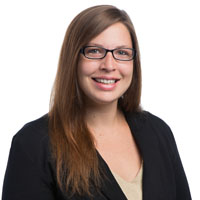Too often, I find myself looking at this or that new map on the happiest places to live in the United States, the states with the most craft beer, or, more importantly, the least social mobility. I glance at where I live and think, well, it could be worse. At least I don’t live in Alabama. And then I move on.
Maps like these have become ubiquitous—indeed, some media outlets have entire sections devoted to them. But the 50 state map infographic is becoming the new pie chart—overused, often abused, and not always best suited for the task at hand.
Clearly, not all of these maps are bad—sometimes they really are the most effective way to communicate the information at hand. But as Ben Blatt has pointed out in Slate, the underlying data are often much “noisier” and often the methodology doesn’t translate (methodology isn’t exactly good for generating clickbait). Taking a simple example of popular girls names over the last couple decades, he walks through some of the false trends that appear in the maps based on how the data are aggregated and presented—maybe not that big of a deal for baby names, but might be for looking at unemployment rates.
The 50 state map infographic is becoming the new pie chart—overused, often abused, and not always best suited for the task at hand.
Even more problematic, our infatuation with maps as infographics often masks the real analytical power of new mapping tools. Used properly, they can help us understand real issues — especially complex, as well as fundamentally local, issues like social mobility and educational access.
Some of the most effective uses of mapping tools are not these viral maps. Instead, recognizing how much place matters, they home in on communities and neighborhoods, seeking to better understand the many factors contributing to entrenched social problems.Recent research out of the Kirwan Institute at the Ohio State University has sparked several such local mapping initiatives. In Richmond, VA, for example, the office of Community Wealth Building has been working to map which neighborhoods in the city best position their residents for future success. As the Washington Post’s Tina Griego described the initiative, “The basic idea is to look at how where one lives – one’s ecosystem — impacts access to transportation, education, health, credit and wealth, all indicators of mainstream economic success and physical well-being.”
Related: We asked 5 experts "What will the future of education look like?"
This visual analysis did not uncover previously unknown truths about Richmond. (Though it is jarring to see how the outlines of poverty in that city today echo the boundaries created by the Home Owners' Loan Corporation’s redlining in the 1950’s.) But by bringing together important local data at an unprecedented level of specificity, the project was able to spotlight where efforts must be directed, and begin to illuminate potential solutions.
Our infatuation with maps as infographics often masks the real analytical power of new mapping tools.
In education, the UCLA Center for Healthier Children, Families & Communities and United Way Worldwide is using a similar approach to better understand educational opportunity for young children. Its initiative—Transforming Early Childhood Community Systems, or TECCS—helps communities to collect, map and analyze local data on children’s school readiness to target investment in early learning.
It’s not just universities that can take advantage of these new instruments. As these analytical tools become increasingly accessible to average users, mapping can offer a route for renewed civic engagement as well. For example, Chicago’s new open data initiative coupled with a newly developed, user-friendly mapping tool, Plenario, allows anyone with access to a computer and Internet to explore and visually manipulate city data to better understand the challenges facing neighborhoods throughout the city.
Local citizens keeping tabs on crime rates in the city have been quick to use these data to explore their neighborhoods and patterns of criminal activity. Last year, in the wake of almost 50 school closings, the city created so-called “safe passage” routes for students venturing through unfamiliar neighborhoods to new schools. Mapping prevalence of crime around those routes allows community members to keep tabs on the effectiveness of the program.
Related: Why we need a new college admissions strategy.
For those hoping to increase social mobility through policy, mapping can help to illuminate with greater nuance and specificity where opportunity is abundant and where it is lacking, and begin to identify important levers for change within a community.
One area where we need more of this mapping: education. In a recent report from New America, Putting Learning on the Map: Visualizing Opportunity in 21st Century Communities, I make the case for leveraging mapping tools to better understand the complex web of educational opportunities that communities need to provide residents with a chance for future success. The examples I highlight in the report have, by bringing together data at the neighborhood and community level, sparked new conversations, as well as additional investment, in educational opportunity.
These enduring divides require deep local analysis to drive change—not another 50 state infographic.
